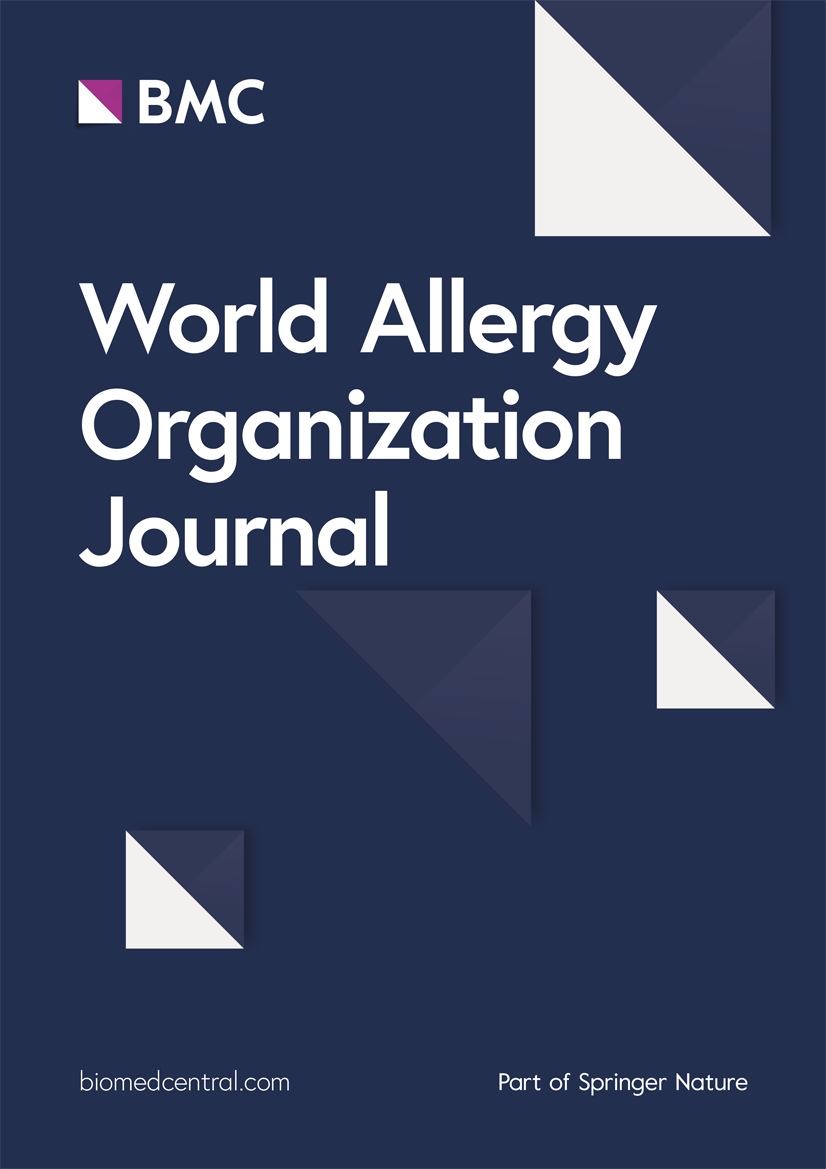新型益生菌糖果在预防哮喘儿童呼吸道感染方面的开发和临床评估
IF 3.9
2区 医学
Q2 ALLERGY
引用次数: 0
摘要
目的哮喘是儿童最常见的慢性疾病。上呼吸道感染常是哮喘加重的原因。研究表明,孢子形成的益生菌可以减少病毒感染。本研究旨在确定芽孢形成益生菌芽孢杆菌糖果对哮喘儿童呼吸系统疾病的影响。方法,在这项随机试验中,69名患有轻度间歇性哮喘的7-11岁儿童随机接受益生菌糖(含有1010 CFU益生菌凝固芽孢杆菌)或安慰剂糖,每天服用2个月。主要结果是病毒性呼吸道感染的数量。次要结局包括沙丁胺醇计量吸入器(MDI)的使用、口服皮质类固醇、学校缺勤、急诊就诊和住院以及儿童哮喘控制问卷(c-ACT)。结果在治疗的第一个月(0.28±0.45 vs. 0.51±0.50,p = 0.054)、治疗的第二个月(0.08±0.28 vs. 0.41±0.49,p = 0.001)和整个研究期间(0.37±0.54 vs. 0.90±0.73,0.001),益生菌糖组有症状性呼吸系统疾病的发生率均显著低于安慰剂组。益生菌组强的松龙消耗患者的百分比低于对照组(2.9%对14.7%),但无显著差异(p = 0.081),两组之间急诊就诊率和住院率无差异(p = 0.254)。益生菌组沙丁胺醇使用率和缺勤率均显著低于对照组(p = 0.040和p = 0.046)。益生菌组和安慰剂组的哮喘控制评分(c-ACT)没有显著差异。干预后,两组间差异有统计学意义(p <;0.05)。结论在标准的哮喘治疗中加入含有凝固芽孢杆菌的芽孢菌糖可减少症状性呼吸系统疾病。在建议常规使用之前,需要进一步的研究,包括更长的治疗期。本文章由计算机程序翻译,如有差异,请以英文原文为准。
Development and clinical assessment of a novel probiotic candy in the prevention of respiratory infections in asthmatic children
Objective
Asthma is the most common chronic disease among children. Upper respiratory infections are often the cause of asthma exacerbation. Studies suggested that spore-forming probiotics can reduce viral infections. This study aimed to determine the effect of spore-forming probiotic Bacillus candy on respiratory illnesses in asthmatic children.
Methods & materials
In this randomized trial, 69 children aged 7–11 years with mild intermittent asthma were randomized to receive probiotic candy (containing 1010 CFU probiotic Bacillus coagulans) or placebo candy, daily for 2 months. The primary outcome was the number of viral respiratory infections. Secondary outcomes included salbutamol metered-dose inhaler (MDI) use, oral corticosteroids, school absenteeism, emergency department visits and hospitalizations, and Pediatric Asthma Control Questionnaire (c-ACT).
Results
The frequency of symptomatic respiratory illnesses was significantly lower in the probiotic candy group compared to placebo in the first month (0.28 ± 0.45 vs. 0.51 ± 0.50, p = 0.054), the second month (0.08 ± 0.28 vs. 0.41 ± 0.49, p = 0.001) and the total study (0.37 ± 0.54 vs. 0.90 ± 0.73, 0.001). The percent of patients with prednisolone consumption in the probiotic group was lower than the control group (2.9% vs. 14.7%) but did not show a significant difference (p = 0.081) and no difference was seen in the rate of emergency department visits and hospitalization between the 2 groups (both p = 0.254). The use of salbutamol and school absenteeism in the probiotic group was significantly lower than in the control group (p = 0.040 and p = 0.046, respectively. There was no significant difference in the evaluated scores for asthma control (c-ACT) in both probiotic and placebo groups. After the intervention, the difference between the 2 groups has become significant (p < 0.05).
Conclusion
Adding spore-forming probiotic candy containing Bacillus coagulans to standard asthma treatments reduced symptomatic respiratory illnesses over two months. Further studies including longer treatment periods are needed before making recommendations for routine use.
求助全文
通过发布文献求助,成功后即可免费获取论文全文。
去求助
来源期刊

World Allergy Organization Journal
Immunology and Microbiology-Immunology
CiteScore
9.10
自引率
5.90%
发文量
91
审稿时长
9 weeks
期刊介绍:
The official pubication of the World Allergy Organization, the World Allergy Organization Journal (WAOjournal) publishes original mechanistic, translational, and clinical research on the topics of allergy, asthma, anaphylaxis, and clincial immunology, as well as reviews, guidelines, and position papers that contribute to the improvement of patient care. WAOjournal publishes research on the growth of allergy prevalence within the scope of single countries, country comparisons, and practical global issues and regulations, or threats to the allergy specialty. The Journal invites the submissions of all authors interested in publishing on current global problems in allergy, asthma, anaphylaxis, and immunology. Of particular interest are the immunological consequences of climate change and the subsequent systematic transformations in food habits and their consequences for the allergy/immunology discipline.
 求助内容:
求助内容: 应助结果提醒方式:
应助结果提醒方式:


